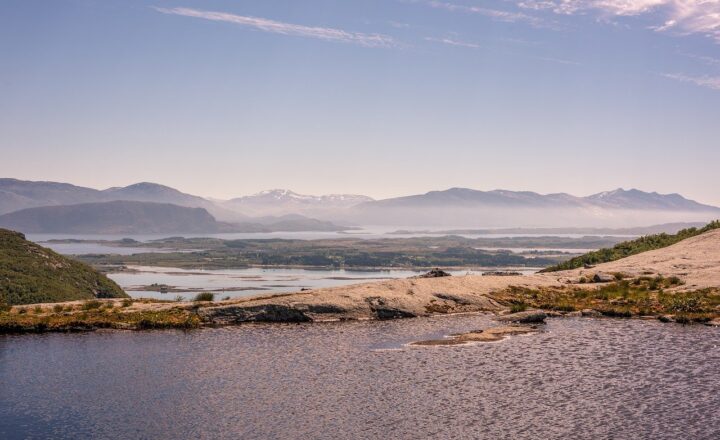How Natural Wonders Like the Grand Canyon and Mount Everest Became Icons of Exploration and Adventure
November 17, 2024

Throughout history, certain natural wonders have captured the human imagination, becoming symbols of exploration, bravery, and adventure. Two remarkable examples that stand out are the Grand Canyon in the United States and Mount Everest in the Himalayas. These breathtaking landscapes not only offer stunning views but also tell stories of geological magnificence, cultural significance, and the relentless spirit of adventure that define humanity’s quest for discovery.
1. The Grand Canyon: A Geological Masterpiece
The Grand Canyon, carved by the Colorado River over millions of years, is one of the most iconic landscapes in the world. This stunning chasm stretches 277 miles long and plunges over a mile deep at certain points. Its intricate rock layers and vivid colors tell a dynamic story of Earth’s geological history, attracting geologists and tourists alike.
1.1. Formation and Age
The creation of the Grand Canyon began approximately 5 to 6 million years ago, although the rock layers visible today date back even further—some reaching over 2 billion years old. The canyon’s formation was primarily influenced by erosion from the Colorado River, aided by the uplift of the Colorado Plateau. This unique geological process provides a visual representation of the Earth’s tectonic activity and the relentless power of water.
2. Cultural Significance
The Grand Canyon is not only a natural wonder but also a culturally significant site for Native American tribes. Several tribes, including the Havasupai, Navajo, and Hopi, consider the canyon sacred. Their rich traditions and deep connections to the land add layers of historical context to this majestic site.
2.1. The First Explorers
While Native American tribes have inhabited the region for thousands of years, the Grand Canyon was largely unknown to European settlers until the late 19th century. John Wesley Powell, a one-armed Civil War veteran, led an expedition down the Colorado River in 1869, becoming the first documented person to navigate the canyon. Powell’s exploration not only mapped and described its geological features but also ignited the public’s imagination, promoting the idea of protected natural spaces.
3. Mount Everest: The Pinnacle of Adventure
Mount Everest, standing at 29,032 feet, is the tallest peak in the world and has garnered a reputation as a holy grail for mountaineers and trekkers alike. For centuries, the mountain’s formidable height and treacherous climbing conditions have attracted adventurers determined to make their mark on history.
3.1. Early Attempts and Climb Obstacles
The allure of Everest has driven numerous explorers to take on its monumental challenges. The first documented attempt to reach the summit occurred in 1921 by George Mallory and his team. Mallory, famous for the quote, “Because it’s there,” summarised the irresistible pull the mountain has on adventurers. Sadly, Mallory disappeared during his ascent, and it wasn’t until 1953 that Sir Edmund Hillary and Tenzing Norgay became the first climbers officially recognized to reach the summit.
4. Cultural and Historical Impact
Everest’s challenging conditions have fostered tales of heroism and tragedy, further embedding it in the fabric of adventure culture. The mountain has become a symbol of human endurance, inviting climbers from all walks of life, each hoping to conquer its heights.
4.1. Sherpa Culture
The Sherpas, a local ethnic group in Nepal, have been fundamental to the climbing culture of Everest. Their expertise in navigating the harsh Himalayan terrain has made them invaluable to climbers. Sherpas embody the spirit of adventure and connection to the mountains, often welcoming trekkers into their worldview of reverence for nature.
5. Convergence of Exploration and Modern Climbing
Both the Grand Canyon and Mount Everest serve as the epicenters of exploration and adventure. The Grand Canyon now attracts over six million visitors each year, while Everest sees thousands of climbers attempting its summit annually. These natural wonders offer awe-inspiring experiences and challenges that continue to inspire a new generation of explorers.
5.1. Encouraging Preservation and Respect
With the surge in tourism and climbing expeditions, both sites increasingly face environmental challenges. Awareness of conservation efforts grows as more people embark on adventures, leading to strategies focused on sustainable tourism practices in these breathtaking locations.
Conclusion
The Grand Canyon and Mount Everest are not just geographical landmarks; they are signposts in humanity’s journey of exploration. They inspire us to connect with nature, confront our fears, and embrace the call of the wild. As icons of exploration and adventure, these natural wonders challenge us to respect, protect, and celebrate the beauty and power our planet offers.
Let us savor every opportunity to marvel at their grandeur and continue the legacy of adventure and discovery they represent.








